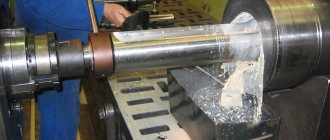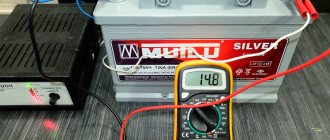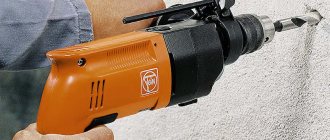How to drill concrete with a drill?
Each of us has repeatedly faced the need to mount various objects on the walls that add variety to the interior, create comfort, or simply remind us of the pleasant moments of life. Most often you have to attach lamps and sconces, paintings and photographs, mirrors and shelves to a concrete surface, install an air conditioner, or a TV. If in the case of a small painting or photograph you can get by by driving a nail into the wall, then when the question is about more massive and heavy objects, the question of drilling holes arises. To avoid misunderstandings when working with concrete, for example, drill breakage or dullness, it is worth properly preparing the partition, choosing a high-quality tool and selecting the correct drill.
Choosing a tool and working with it
When choosing a tool to drill a hole, you should understand that your work depends on it. A good drill accurately drills into a concrete wall or other required material, simplifying the drilling process, while a bad one will require a lot of time, may not cope with the task, or will complicate it. What you need to pay attention to when choosing a drill:
- Is it possible to change the drilling speed? – this point is important, since correction of the speed mode will ensure accurate operation of the drill, helping it not to damage the surface.
- Is it possible to hammer drill and adjust the depth? – impact drilling can be used on problem areas, softening them.
- Is it possible to hold the drill with both hands? – a drill is not a light tool and therefore preference should be given to models that are equipped with handles.
- Is the tool's power sufficient for your job?
Having decided on a drill, before starting work you need to get the hang of holding it. To do this, you should take the drill in one hand, like a pistol, and place the other hand on the handle of the tool (if it is not intended by the design, the hand is placed near the chuck). It is necessary to hold the drill in your hands strictly horizontally, so that the hole does not turn out distorted or at the wrong angle. Wait until the drill reaches ambient temperature before turning on the drill. Sudden temperature changes can cause condensation. If you decide to rest while working, unplug the tool.
Surface preparation
Before you start drilling, you need to make sure that there are no wiring, pipes, or electrical cables in the selected area of the ceiling. A metal detector will help you cope with this task, as it reacts to non-ferrous metals, iron and steel.
If you ignore this condition, you may stumble upon the fittings, damage the drill, or cables/pipes that were hidden in the ceiling. If this area satisfies all the above requirements, then a point is marked on the wall, and then a small indentation is made in it at slow speed using a drill. It is also worth remembering that the surface of a concrete wall is looser than subsequent layers.
Drill selection
This point can rightfully be considered the main one, since the quality of work and the safety of the drill itself, as well as the accuracy of the work, depend on the correctly selected drill. Today there is a huge variety of drills on the market: for working on wood, metal, concrete. The latter are distinguished by a triangular tip. For a concrete surface, it is best to use a carbide drill, such as a Pobedit one. This type of drill crushes the material without tearing it, which is ideal for concrete floors.
If, when drilling a wall, the drill does not go forward when it encounters a dense area, it is recommended to use a punch. Having inserted the punch into the hole, hit it with a hammer until it begins to move forward and softens the problem area. After this you can continue drilling.
It should be noted that without a punch, a hammer drill can easily cope with this kind of difficulty, but it makes holes that exceed 13 mm in diameter. If you want to use universal drills when drilling, you need to remember that they require cooling, vibration is turned off and are only suitable for a regular drill.
How to remove a jammed drill bit from a hammer drill
There are several simple ways to remove a drill bit stuck in it from a hammer drill chuck.
- The free part of the drill, which is stuck in the hammer drill chuck, must be clamped in a vice, and then gently tapped on the cams of the clamping mechanism with a hammer, using a wooden spacer.
- If the method described above for removing a stuck drill does not help, then the cartridge can be placed in a container with gasoline, and then try to remove the drill in the usual way.
- If the drill is jammed in a key-type chuck, you should turn the key of such a mechanism counterclockwise, which will free the tool. If necessary, you can drop machine oil into the key type chuck in which the drill is stuck.
- — To remove a drill that is jammed in the keyless chuck, you can try to loosen the clamp of the fastening mechanism with gentle blows made counterclockwise.
- The last option for freeing a drill that is jammed in a hammer drill chuck is to completely disassemble the fastening mechanism.
To avoid the problem of a stuck drill, its shank should always be treated with a waterproof lubricant, which will facilitate the process of removing the tool from the hammer drill chuck.
Errors when working with a drill
- Clothes and gloves must fit properly.
Under no circumstances should you try to hold the rotating chuck with your hand - this is what the drill body is for. Otherwise, you may injure yourself. If you use gloves, do not take them “with reserve”. Gloves that do not fit properly may also become caught in the chuck and cause injury. Overalls should not dangle - they can be rolled up or pressed with sleeves.
- You should not press as hard as you can on the turned-on drill - this will cause you to fall, as it will become more difficult for you to control your balance. In addition, you may break the drill. If a tool passes through a concrete wall, the injuries it can cause to a person can be more than serious.
Some useful tips
Metal drilling work
Is it possible to drill into metal with a concrete drill?
It is possible, but this is in case of extreme necessity for shallow holes with a small diameter. Unprofitable.
The letter K in the marking indicates that this is an alloy with the addition of cobalt. On the market you can find a drill called “Cobalt”. We will not vouch for all manufacturers; we will only note that reviews of practical use in the vast majority of cases are positive.
How to drill with a step drill in metal?
Step drills are universal - just one can make holes of different diameters (from 2 to 40 mm). They are most effective when working with thin metal, when you need to get a neat edge. They are better fixed in the cartridge, they are easier to sharpen, and therefore, with proper use, they last longer, but they also cost more than usual. The principles of working with them are the same, but it is easier to drill large-diameter holes than with conventional twist drills.
Is it possible to drill metal with a Pobedit drill?
The principle of operation of drills for metal is to cut, and with pobedite soldering, crush materials. Brick, concrete, and stone are better suited for this. Therefore, as mentioned above, you can, of course, drill metal with a drill for concrete, but it will quickly become unusable and the victorious soldering will be destroyed.
Revolutions
What is the larger hole diameter? the lower the speed should be. The greater the depth? Therefore, you gradually need to reduce the pressure on the drill. With a drill diameter of up to 5 mm, the torque should not be higher than 1200-1500 rpm. Accordingly, 10 mm in diameter - no more than 700 rpm, 15 mm - 400 rpm.
How to drill holes in large diameter metal?
As a rule, most drills for household use have a power from 500 to 800 W, which allows you to drill holes with a diameter of up to 10-12 mm. In metal up to 2 mm thick, using step drills you can make holes up to 40 mm. With a thickness of 3 mm, bimetallic crowns are better suited.
When drilling deep holes with any tool, you may sometimes need a magnet to remove the chips.
Metal drilling process
Particular attention should be paid to safety precautions, be sure to protect your eyes from chips, and if there is distortion and jamming, immediately turn off the drill and change the torque to reverse movement.
In conditions where there is no electricity or when the noise of a working tool can disturb others ( read : when can you make repairs so as not to quarrel with your neighbors?) - the ideal solution for drilling metal would be a hand-held mechanical drill, the so-called brace. Low speed and pressure, no overheating, just what you need. Of course, there are also disadvantages - time-consuming and easy fatigue. In this simple “old-fashioned” way, you can drill holes with a diameter of up to 10 mm.
We hope our tips will be useful to you.
More information in this video.
It would seem such a simple matter to drill a hole. But until you try it yourself. The drills either bend or break, or simply jam. You are sitting.
A drill is a cutting tool that serves as an addition to the handle of a device with an electric motor. They can only work together. Drill.
When purchasing a sink made of artificial stone, the buyer often faces a problem such as the lack of a hole for the faucet. Of course it's worth it.
Which varieties to choose, how to drill correctly
The action of the instrument consists of two types of movements: rotation and repeated blows. Due to the hardness of the material, only the first one is not effective enough. To process monolithic slabs, the following tools are required:
- The reinforced concrete drill can be inserted into a drill. It usually has a diameter of up to 1.2 cm. To effectively create a hole, a more powerful tool is needed. They use it to drill into a concrete or brick wall. The width of the hole will be increased compared to the diameter of the part.
- The tool is used as a drill for hammer drills. In this case, drilling and striking a monolithic surface will be combined. The name “SDS” is indicated on the surface. Longitudinal grooves are drilled in the shank for more reliable fastening. The cross-section of the drill usually does not exceed 3 cm. The depth of the hole reaches 30 cm.
- Tools are sold that are suitable for both a drill and auger.
- It is unacceptable to use a screwdriver for working with drills.
Using a drill, an expanded recess is obtained that exceeds the diameter of the part. This is taken into account when choosing a drill or auger model. Sometimes for thick holes the work is done in two stages: first they take a thin part, then go through it again with a thicker one.
When drilling into a concrete wall, it is important to prevent the part from overheating. This is essential when working with low-power equipment. Craftsmen usually perform drilling in several stages, allowing the part to cool each time.
Note! Choosing reputable manufacturers allows you to feel confident when performing processing. They wear out more slowly and work better.
When processing, consider the following:
- First you need to determine exactly where the recess will be made. The starting point is marked with several blows of a sharp metal instrument (for example, a bolt).
- It is necessary to evaluate the sharpness of the part and pre-sharpen it if it has become dull.
- Sometimes you need to drill through a layer of plaster. To avoid destroying it, the rotation speed must be reduced. This will reduce the amount of dust.
- Sometimes, when making a hole, they collide with metal fittings. When this situation occurs, you need to stop actions and change the tool to one that is suitable for metal processing. When the reinforcement is drilled, you need to continue processing again with the same tool, which is designed for drilling concrete.
- If during work a part is blocked in the wall, it is prohibited to loosen it. If this rule is violated, it can easily break.
- The part must be held perpendicular to the wall surface. This will avoid distortions.
Since a large amount of dust is generated during drilling, it is necessary to wear a protective mask and goggles.
Characteristics
When choosing a suitable part, it makes sense to focus on using products from reputable manufacturers. The following describes what a concrete drill for a drill or hammer looks like:
- When using a Makita, the side grooves are slanted less than usual. The products are known for their high wear resistance. There are 4 grooves on the working surface. The nozzle on the outer part has a cone-shaped shape. Typically this tool is used to make shallow holes.
- Bosch products are considered the most effective. Their range includes products for hammer drills and drills. They demonstrate good performance and will ensure that friction during operation is reduced.
A drill is used for drilling in cases where narrow holes are required. If we are talking about what kind of drill you need to drill concrete to get a hole of 1.2 cm or wider, then you will need a hammer drill.
Equipment types
Drilling begins with preparing tools for work. You can make holes using a screwdriver, drill or a special drilling machine.
To make a hole, you need to select the appropriate equipment. For metal workpieces, you need to choose specialized equipment that is suitable specifically for this material. This is due to the fact that equipment for wood, concrete or ceramic tiles have different sharpening and shape. Tooling for metal products is marked with the letters HSS.
The working part of the tool is coated with titanium nitride coating, which increases their strength and wear resistance. For hard steels, a different tooling is used, which is designated P18. The strength of the tool increases when cobalt is added to its composition. An example of marking is P6M5K5.
To drill alloy steel, drills with a tip made of carbide are used. With their help, you can drill any metal workpieces, however, due to the high price, this is not cost-effective.
When the hole is made, you can select a drill for the thread. Its diameter will depend on the previously used equipment. To make holes of different diameters in thin metal sheets, you can use cone drills.
Is it possible to drill with a drill in concrete?
Situations often arise when it is difficult to find a tool for drilling metal products at a construction site, but there is equipment for working with concrete. You cannot make holes of large diameter or in thick metal sheets with concrete drills. Otherwise, you may break the equipment or damage the surface being processed.
How to drill with a step drill?
On sale you can find stepped structures for creating holes in metal of various diameters. Several drills of different diameters are fixed on one axis. They are designed to create holes of various sizes in thin sheet metal. When working, do not rush or put too much pressure on the drill handle.
Is it possible to drill with a Pobedit drill?
Any master of finishing work will tell you that drilling metal with Pobedit equipment is unacceptable. Pobedite drills are designed for hard and, at the same time, brittle materials. These include natural stone, brick, concrete. When it hits metal, the drill will hit the surface and damage it, but there will be no hole.
How to drill large diameter holes?
Drilling large holes in metal requires the use of appropriate equipment. You can do the work in several ways:
- Crown for metal surfaces. It is a circle of the required diameter with sharpened edges. There is a drill in the center that pierces the metal. Next, at low engine speeds, the bit makes a hole of the selected diameter. During work, it is necessary to use forced cooling of the sharp edges of the crown and the surface being treated.
- Multi-stage operation. This implies the use of several metal drills of different diameters. Work begins with equipment of the smallest diameter and increases as drilling progresses.
- Cone-shaped equipment (stepped). Designed for working with thin sheet metal.
Builders recommend using crowns. However, when working with them, it is necessary not to increase the speed and ensure that all the teeth running around the circumference are intact.
How to avoid dulling a tool?
The tool becomes dull because it overheats during use. To maintain sharpness, drilling should be done at low speed. There is no need to press the power button all the way down. When drilling thick workpieces, you need to use coolants or pastes.
If there is no cooling lubricant, machine oil can be used instead. Coolant keeps the tool from overheating and reduces friction.
Design features of a drill bit, what they look like
Before starting the work, the master determines which drill to use to drill the concrete. If used with a drill, the base will be round or hexagonal. No side grooves are made here due to the fact that this is not necessary. They are required when the master will work with a hammer drill, and are designed for stronger fastening of the part.
For drilling in monolithic slabs, a pobedit tip is used. It retains its sharpness for a long time even with intensive use. Pobedit is an alloy of tungsten and cobalt, with very high strength.
Note! Drilling with diamond bits is used to create recesses. They are cylindrical in shape and made of hardened steel, mounted on a rod to be secured in a chuck. The working edge can be smooth or serrated. To increase its strength, diamond coating is applied to it.
Using diamond drills is more expensive than conventional tools, but provides better results. When using such a tool, even the most durable types of concrete will be drilled quickly. The resulting holes will have smooth edges. When the master works in this way, the formation of dust and debris is almost completely absent.
Drilling thick workpieces
Not many novice craftsmen know how to drill a hole in thick metal. Deep drilling is more difficult than usual. In production, it is carried out using lathes. In them, the workpiece is fixed in a movable spindle, which rotates it.
If it is not possible to use industrial equipment, you can drill a deep hole using a drill. To do this, you need to purchase special guides for power tools. Additionally, it is necessary to use machine oil for cooling. During operation, you need to stop periodically to clean out the chips and allow it to cool.
How to choose a drill for drilling reinforcement in concrete?
The initial characteristic is the diameter of the hole, as well as the shape of the landing part. In this case, the drill is always designed for one-sided drilling, since for concrete surfaces it is almost impossible to align the axes of two holes that are drilled from opposite sides of the slab, wall or block.
How to drill reinforcement in concrete? In one pass, it is usually possible to obtain holes in the reinforcement if the maximum diameter of the cavity does not exceed 10...12 mm; in all other cases, preliminary drilling is performed first, and then reaming.
The choice of the size of the impact drill decides a lot. The disadvantage of a rotary hammer is that it sharply increases the level of vibration, and this will negatively affect the accuracy of the resulting hole. Considering that reinforced concrete has no plasticity, this circumstance will “help” break a hole or break off a piece of concrete along with under-drilled reinforcement.
Do I need to use a core or a bit? Experts think so. In addition, an impact drill with a rebar drill must be installed on a massive stand (or a tripod - when making vertical holes in the ceiling).
The best quality is obtained from hollow drill cores for reinforced concrete. They penetrate into the foundation only along the perimeter of the bit, leaving a cylindrical volume of concrete inside the tool. This piece is removed after drilling or periodically broken into pieces to ensure smooth operation of the drill. Drilling reinforcement in this way can be dry or wet (the second is preferable).
How to drill with a drill?
Drilling metal with a drill requires following some recommendations:
- To make a hole you will need an electric drill, a core punch, a hammer, machine oil and safety glasses.
- Initially make markings.
- Wear safety glasses.
- When the pressure on the drill is low, you need to select the low speed position and start working.
- Don’t forget to water the area being treated with coolant.
If you follow the technology and use high-quality tools, you can make holes of different diameters and depths. To drill straight holes or accurately select the depth, you can use a device called a “depth stop.” It is attached to an electric drill and adjusted to the desired depth.
How to drill with a screwdriver?
You can drill metal workpieces not only using industrial equipment or an electric drill, but also using a cordless screwdriver. This power tool is low power. Because of this, it is suitable for drilling holes of small diameter and depth.
Drilling is performed using industrial equipment and power tools. It is important to choose the right equipment and take into account the depth and diameter of the hole. To ensure that your equipment lasts longer, you should use coolant. You need to drill perpendicularly to avoid damage to the workpiece or tool.
How to drill concrete
To choose what to drill into a concrete wall, you need to follow the rules:
- Choose a tool with the ability to change the speed of the process, thanks to this the drill will work carefully without damaging the surface.
- Pay attention to whether the tool has impact drilling and depth adjustment; this gives good results when working with problem areas and helps soften them.
- Choose a drill that you can hold with both hands.
- Pay attention to the power of the tool.
Drilling with a hammer drill
The hammer drill is the most powerful tool, suitable for large volumes of work and for drilling concrete walls.
There are 2 ways this tool works: rotation and impact. For rotation, a special type of drill bit for a concrete hammer drill is used - a drill, it comes with a Pobedit drill bit. You can tell what a concrete drill looks like by its special shank, to which a special chuck is installed.
The pobedit tip is resistant to heavy loads. When the hole is located on the edge of the structure, drilling concrete using the impact method is not recommended, because A concrete structure may chip, and when working with ceramic tiles, the material will simply crack.
In this case, it is better to use a diamond concrete drill for a hammer drill; it has greater hardness than a Pobedit drill; you must take breaks during work to cool it; drilling at high speeds is prohibited.
Drilling
For small-scale work, especially in an apartment with thin walls, you can make a hole with a drill designed for drills for working with concrete. It can be either a win or a diamond product. A drill with a cylindrical shank is used for impact drills. When working, it is recommended to choose medium speed. Which drill bits for concrete are best to choose depends on the type of drill.
Concrete drill bits for drills - what and how best to drill
Comparing different types of tools, you can see that they have visible differences. Those used for drilling monoliths have a pobedite head installed. It is made of high strength metal. Pobedit allows you to drill concrete slabs and rocks.
Products with a reinforced head are used to process monolithic concrete slabs, metal, wood and other materials. The purpose can be determined by the color of the tip. White color is provided for concrete treatment. Black is used for drilling in metal, and a light shade of metallic color is used for drilling in wood.
If they are doing one-time repairs in an apartment, then they choose a tool at a more affordable price. During professional work, the need to work with this tool often arises, so purchasing well-made units is more important. At the same time, it is profitable to buy a set. Each part in such a set is purchased at a lower price.
Types and parameters of drills - distinctive features
When choosing a drill for concrete, builders ask how to distinguish its characteristics and make the right choice. Each product differs in size and is produced in a given diameter and length. One of the small drills for concrete work is 4-5 mm, it is no longer possible to drill a thinner hole of this diameter, its depth will be about 5 cm.
For example, with a diameter of 12 mm or more, the drill will be 1000 mm long, this will be enough to make a through hole in all walls except the bunker. The largest diameter is about 30 mm, it is not easy to work with, there is a heavy load on the hammer drill, and it takes a lot of time to cool down.
If it is necessary to make a larger hole, a core drill is used, which has a centering drill and a crown around it. Thanks to this, the process goes quite quickly, and the load on the hammer is small.
The core drill is coated with diamond coating or lining made of pobedit. A drill with a pobedit tip is set to the drilling and impact mode, with a diamond tip - to the drilling mode.
Drills from Pobedit
Pobedit as an alloy was developed in 1929, the main composition is cobalt and tungsten, where 10% cobalt and 90% tungsten. Effectively cope with brick, cinder block, concrete. The drill can be used to crush and cut concrete; it can withstand impact loads quite well, and no deformation of its cutting edges is observed. Steel products are subject to deformation and do not work as efficiently.
One of the advantages of the work is that there is no need to apply excessive force to the Pobedit drill.
Diameter selection
The diameter of the drill is selected taking into account the fact that when working with dense material, such as concrete, beating occurs during operation. As a result, the hole comes out slightly larger than planned. For this reason, the diameter should be taken slightly smaller than the planned hole itself. The length of the element indicates the greatest depth that the hole should be.
Most popular brands
The best concrete drill bits for drills from foreign manufacturers:
The products are considered to be of high quality, and therefore have a high cost, especially Bosch products, which have a four-spiral design.
Domestic manufacturers:
- Interskol;
- Bison;
- Anchor;
- Hurricane.
Drills have an average price category and, accordingly, a short service life. Products from a Chinese manufacturer can also be of good quality, but only if they belong to the appropriate price category. When constructing buildings in Moscow and other Russian cities, workers often use the listed product brands.
Article
products for professionals from professionals
Diager drills and bits are products for professionals in the field of drilling, manufactured at the Diager concern plant in France. Steel from Germany is used in the production of drills; carbide tips are manufactured at the Ceratizit plant in Luxembourg (supplier of all European premium drill manufacturers).
The main advantages of Diager drills are strength, long service life, speed and drilling accuracy. PGM certified
, which means they are ideal for drilling holes for mechanical anchors of the same standard.
Below we will talk about Diager drills designed for drilling reinforced concrete.
- New for 2022 – sds-max Ultimax 646 drill with a monolithic carbide tip. Specially designed for powerful rotary hammers. The manufacturer claims that the drills pass reinforcement up to ø22 mm
, while the average
resource 150 m
in concrete C50.We decided to put these drills to the test and conducted our own little test:
Materials and equipment:
Drill Ultimax646 25*540mm Hammer drill Bosch GBH 8-45 Reinforced concrete block 400mm thick, reinforcement diameter 20mm in one layer
Results:
Drilling was carried out in the center of the reinforcement.
The drill passed through the reinforcement in 8 minutes (4+4, break for 1 minute for cooling). Feelings:
The drill is perfectly balanced, vibration is low, and there is a feeling of comfort when drilling.
When passing through the reinforcement, the drill works like a metal drill, removing short chips. Conclusion:
The drill has proven itself to be excellent when drilling reinforced concrete, but for serial drilling of reinforcement we recommend using diamond core bits. - The Booster Plus drill for light hammer drills (SDS-plus shank) has no analogues - a monolithic three-beam pobedite tip with complex sharpening angles and a chisel effect resists reinforcement. The manufacturer declares an amazing resource: up to 1500 holes
in concrete grade B50! The square spiral spiral has three channels combining passage, compression and depression chamber for accelerated removal of sludge. The drill is indispensable when the finishing work has already been completed - it drills
perfectly round holes
and provides
reliable fixation of fasteners
.The B3max reinforced concrete drill is designed for heavy hammer drills (SDS-max shank) and is similar in tip and spiral design to the Booster Plus drills.
When hitting the reinforcement, the loads are distributed in a certain way, which allows the Booster Plus and B3Max drills to pass through the reinforcement without jamming. Booster Plus drills: 1. Drill reinforced concrete.
There is a comparison of two drills: with two cutting edges and three cutting edges (Booster Plus).
Booster Plus maintains the drilling axis and confidently passes through reinforcement. 2. They have a very long service life
(up to 1500 holes)
3. They drill perfectly straight holes
thanks to the three-beam tip and the self-centering effect. This ensures reliable fixation of the fastener. - The Ultimax reinforced concrete drill for SDS-max rotary hammers is the predecessor of the Ultimax 646. Ultimax has increased strength and bending resistance. High temperature finishing ensures the strength of the tungsten tip. The unique anti-blocking system reduces the risk of the drill jamming in particularly hard and reinforced materials. Ultimax drills are suitable for drilling materials such as reinforced concrete, granite, stone, brick. The resource of the Ultimax drill is also stated to be impressive: up to 1000 holes
in concrete grade B50!1. The core of the translational spiral has been strengthened. This increased the stiffness in the area subject to maximum stress (the lower sections of the drill). The strength of the drill allows the energy of the hammer to be transferred without loss. 2. 6 asymmetrical tip edges ensure rapid penetration into the material and minimize the risk of drill jamming in particularly hard and reinforced materials. The rounded progressive spiral ensures rapid removal of cuttings and eliminates the risk of drill jamming due to cutting cuttings being pressed into the hole. 3. The pressure of the hammer drill, coupled with the hardness of the material, creates serious stress on the drill. Special heat treatment of the drill body provides resistance to these loads and concentrates the impact energy on the drill tip. Ultimax: 1. Ease of use - low vibration level 2. Anti-locking system: 6 cutting edges prevent the drill from jamming in the material 3. Accuracy 4. High drilling speed 5. High performance in hard material
Reminder for working with Diager drills
Drilling recommendations
If stones hit during operation, it is difficult for this element to move further; the stone must be broken using a chipper, then work continues. When drilling a hole in a load-bearing wall or ceiling, it is recommended to use a hammer drill; with its help, the work can be completed as quickly and efficiently as possible.
It is also better to drill a reinforced concrete wall with a hammer drill. For a hole in ceramics on the wall, you cannot use the impact method or use a drill on concrete, otherwise the tile will collapse.
Fundamentals of drilling technology for reinforced concrete reinforcement
To achieve a positive result - the absence of cracks and chips in reinforced concrete - it is worth remembering a few rules:
- Clear marking of all drilling locations with markings at once.
- Use of personal protective equipment - a dust mask that fits tightly to the face, headphones and goggles. Work only with protective gloves.
- The space around the future hole is covered with plastic film. All existing ventilation openings should also be closed.
- For drilling reinforced concrete, it is recommended to use drills made of hard alloys of the VK type with a minimum percentage of cobalt. The physical and mechanical characteristics of such alloys are given below:
| Brand | Bending strength, MPa, not less | Rockwell hardness, HRA, no less | Density, g/cm3 |
| VK2 | 1000 | 90,0 | 15,0…15,4 |
| VK3 | 1000 | 89,0 | 14,9…15,3 |
| VK3M | 1100 | 91,0 | 15,0…15,3 |
- The diameter of the drill bit for the reinforcement should correspond to the diameter of the future hole. Impact drills are used for drilling, and the rotation speed of the chuck with the drill should be the minimum permissible.
- The depth limiter on the hammer drill is set 5...10 mm deeper than the length of the drill. If there is no scale on the instrument. For marking, you can wrap a strip of colored tape around the bat.
- The drill feed at the initial moment of drilling should be minimal, then, upon reaching the steel, the feed and speed are increased, periodically clearing the drilling area of dust.
- If a blind hole is drilled, then to control the depth and quality of drilling, it is recommended to insert a hose with a nozzle connected to a compressor into the cavity and clear the cavity of any remaining material.
Carbide drills get very hot when drilling concrete, but this is not a disadvantage. However, due to the sudden change in drilling conditions for concrete and reinforcement, the durability of the drill is low in any case. The length of the working part of the drill should be chosen such that after drilling is completed, at least 20...30 mm of the drill body remains above the bit.










